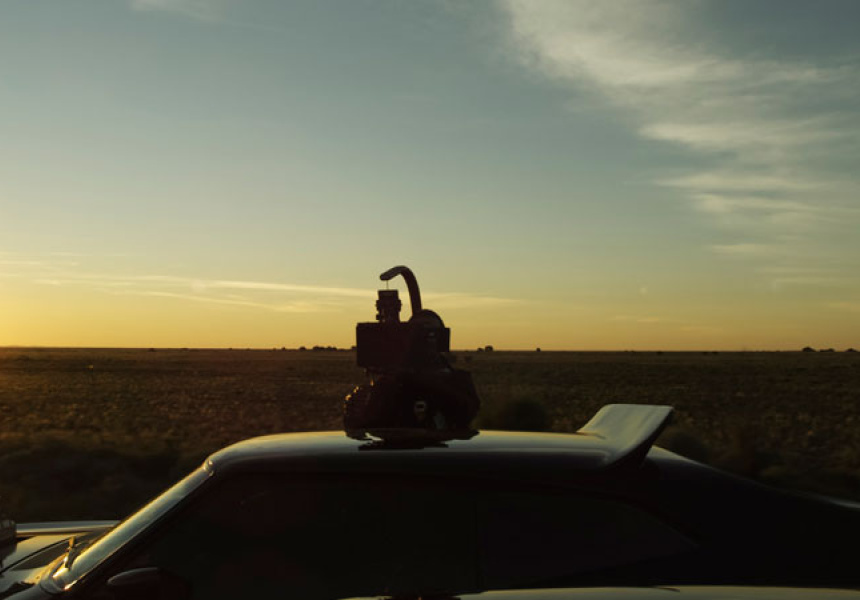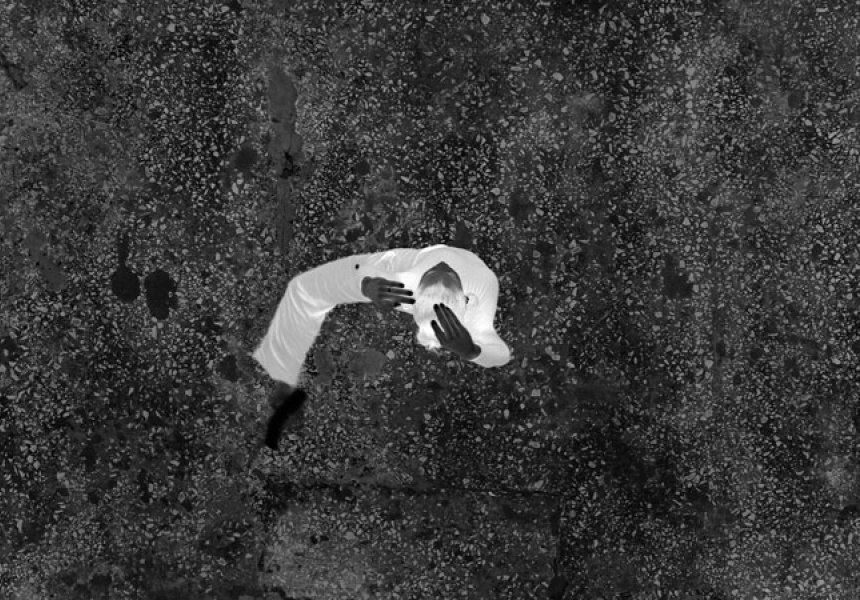Artist Shaun Gladwell is navigating a shopping mall, where he is finding the pleasure and the horror all mixed in.
“Not too much inspiration here,” he says. “It's probably better to come back when everyone's left and do some serious high speed knee slides on this very shiny floor. That would be pretty exciting.”
Gladwell's interest in the way people creatively respond to environments is central to his latest series of works, Stereo Sequences, which is currently showing at ACMI and represent the first time the institution has commissioned an Australian artist for a solo show.
Never miss a Melbourne moment. Make sure you're subscribed to our newsletter today.
SUBSCRIBE NOWIn his initial approach to the work, Gladwell took his lead from the underground space of the gallery itself. “I was thinking about what it is like to be looking at this strange video art underground, and then I thought, hang on, I’ve been interested in these underground spaces before.”
The ACMI screen gallery was the disused Princes Bridge train station in a past life, which resonated with Gladwell. “There’s a few works in the show that directly deal with subways and trains and it’s kind of nice to have that parity or that stronger relationship.”
The show has given him the opportunity to further explore conceptual and aesthetic concerns he has been preoccupied with since his 2000 breakout video work, Storm Sequence, in which a lone skateboarder – slowed to 40 per cent of the real time speed – skates through a storm in Bondi, the decelerated footage allowing the viewer to examine every nuance and fragment of movement.
“I love that idea that in slow motion you can really analyse stuff,” he says. “I like that idea of expanding time, and even forensically looking at everything. The whole scene becomes a tableau for analysis in a way that is sometimes hard to see in real time.”
If you’ve ever had the disorienting sensation of moving backwards on a train, only to realise it is the train next to you that is sliding forward, you would recognise the notion that Gladwell explores in his piece Parallel Forces. The work consists of four pairs of opposing screens set into the walls of the gallery, conveying iconic ‘Ozploitation’ imagery of cars, motorbikes and helicopters with bodies moving amongst them, performing daring physical feats.
“We have these two viewpoints, these two cameras that are moving through space but they have this fixed zero relative speed, and they appear like they’re really quite stationary but they’re not really moving in relation to each other. They’re actually just moving parallel through space and they record each other in a sense. So I’m interested in parallel as an idea, but in a way, I kind of played it out physically, kind of almost performed a series of parallels.”
The work establishes the parallel as a theme that weaves through other works in the exhibition. “It was great to work on really simple ideas but have a chance to really flesh them out,” says Gladwell. “It was an opportunity to do quite a lot of work, and get it all in conversation with each other in the same gallery space, which was great.”
Gladwell’s use of ACMI’s underground space reflects his continued fascination with the way in which underground culture and activities, such as breakdancing and skateboarding, re-author urban spaces. “It’s like the city is the hardware and these activities are the software running through it, trying to reprogram the space, trying to look at the space in a different way,” he says.
“If you think of individuals who grow up in certain spaces and may have had nothing to do with the design of those spaces, that doesn’t stop them from being able to have some power in re-authoring the spaces, or somehow performing within those spaces, or even creatively misusing those spaces,” he continues.
“So the work looks at this idea of how individuals can take on these spaces and own them in a way, even if it’s just for a few seconds. That in itself is a very creative process and a huge drive behind a lot of my work.”
Shaun Gladwell: Stereo Sequences runs until August 14 at ACMI. Entry is free.



